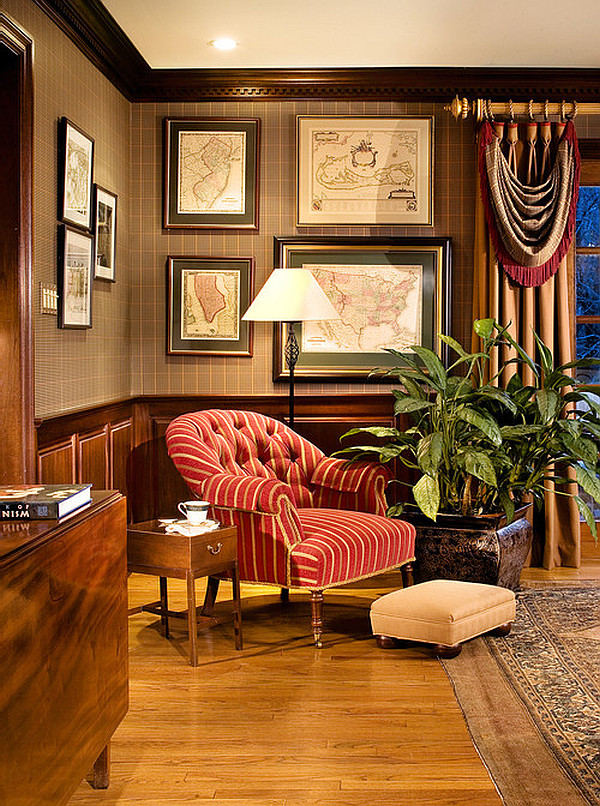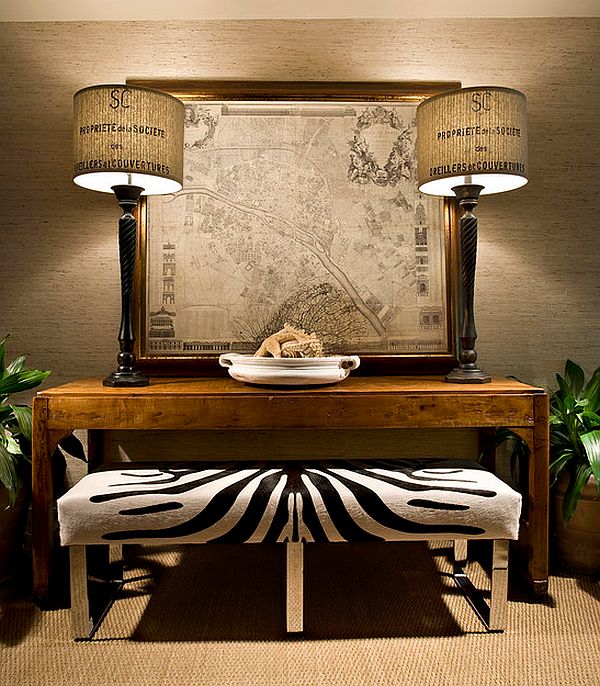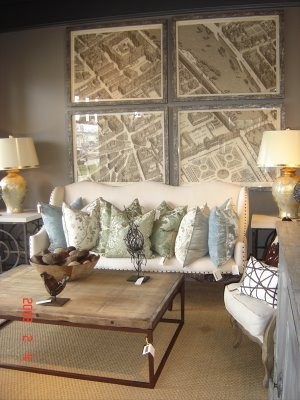Preservation advice
STORAGE Museums keep their storage areas at an optimum temperature of around 70 degrees F, and relative humidity of 50%. If conditions cannot be kept to this ideal (and historic houses, for example, often are not air-conditioned), avoiding extremes, such as the very high heat in an attic, and avoiding major fluctuations, such as an unheated building that gets cold in the winter, but hot in the summer, should help from a preservation standpoint. If it's always warm and humid that's better than warm and humid, then cold and dry, then warm and humid again. It always makes sense to keep any work on paper out of direct sunlight and use UV filtering glass.
Check periodically for signs of foxing or mold, as that is one of the common problems with paper and high humidity. Then there are some interesting products out: Fuji Silysia Chemical Ltd. has a line of products called Art-sorb, which is supposed to absorb and desorb moisture depending on the climate changes and protect the artwork. It comes in various forms including sheets. Their number is (800) 795-9742 and they are in Oregon, USA. If you want to consult a conservator; The American Institute for Conservation of Historic and Artistic Works gives Referrals. They're in Washington, DC, at (202) 232-6636.
Archival Box
Each of these specifically designed archival boxes are custom manufactured. Made from exclusive Perma/Dur B-Flute Single Wall Corrugated Board (which by design is extremely strong, lightweight, acid-free and lignin-free). The box is also buffered with 3% calcium carbonate for an alkaline reserve in all three layers for maximum protection against acids. This exclusive board is made of fully bleached virgin fibers and is very durable.
The board is a single wall (0.125") with a pale blue/gray color. The two smaller boxes feature metal edge construction while the largest box is a ready-to-assemble design which provides more structural integrity for its large size. All feature fully telescoping lids.
Use Acid-Free Interleaving Tissue paper to separate each map. You may either use Unbuffered or Buffered tissue paper.
Unbuffered Tissue paper is acid-free and is recommended for use with colored prints, textiles, and watercolors. Cyanotype, dry transfer or chromogenic prints also require unbuffered tissue. This tissue is an excellent choice for separating prints, drawings, or lithographs and protecting artifacts. In addition, unbuffered tissue is used with silk, leather, and other animal protein-based textiles. Very thin (.001) 16 gm2 acid-free tissue with a 3% calcium carbonate buffer added. Buffering agents will help neutralize acids and prevent acid migration to the objects that the tissue is used to protect. Buffered interleaving tissue extends the life of paper, photographs, textiles, and artifacts. Use for most photographs, including black & white, color & albumen prints.
Available in packages of 100 sheets or rolls.



CUSTOM ARCHIVAL FRAMING
In framing, the materials that directly contact your art are of the greatest importance. Using non-archival (acidic) or inappropriate materials to adhere to or support artwork can result in unnecessary damage and a possible decrease in the artwork's monetary value.
Reversibility is essential when adhesives are used to hinge artworks to their supports.
Following are a few basics:
Museum Boards
Ask for museum-quality rag mat boards that come in a variety of widths and natural tones and are designed to protect and preserve your artwork. They are not only acid-free but are designed to absorb acid from the art as well as the environment. Photographic work, for example, requires a specially treated museum board, formulated specifically for its photochemical make-up.
Backing Boards
A matted or floated artwork is backed for further protection with an acid-free corrugated board or a corrugated plastic board when drastic humidity changes are a concern. It is then sealed with paper tape, which protects the artwork while allowing an exchange of air.
Hinging
Hinging is the process of attaching works on paper to a backing board, or support, often for the purpose of "floating" the artwork. This is done as an alternative to "over-matting" in which the mat is placed over the artwork. As with the selection of matting and frames, hinging must be tailored to the artwork in question. Depending on the weight of the paper on which the artwork is made, an appropriate hinge is chosen that will support the piece without restricting its natural movement over time. All hinges are made from acid-free Japanese papers. Our adhesives are also acid-free and reversible.
Glazing
Glazing refers to the use of either glass or plexiglass as a practical barrier between your art and the atmosphere in which it is hung. This is necessary because of moisture, smoke, acidic fumes and a host of threatening conditions artwork often faces. Typically, we recommend the use of plexiglass over the glass, as it is clear and visually indistinguishable from glass, yet will not break and pose a threat to your safety or that of your artwork. Museum-quality UV-filtering plexiglass and glass are available and recommended for valuable artwork on paper and color photography to protect them over time from the color-fading UV-rays. These products also offer anti-reflective and anti-static properties.
Text by Conservation framing services
Tru-Vue sells high-performance glazing to custom frame shops, to museums and galleries across the globe, to anti-reflective custom coatings for commercial applications.
Whether it’s Museum Glass®, Conservation Clear®, or Optium® Acrylic Glazing.
REFERENCE MATERIAL
1. Books. No single book tells everything there is to know about map collecting. Libraries often have books on cartography and some are offered by large book dealers or map dealers.
2. Dealer catalogs. Most larger dealers issue catalogs of material. There are often well documented and useful. Occasionally back issues of catalogs appear at used book stores but dealers often have back issues that are available for collectors.
3. Map Societies and networking. Many large cities have map societies and local inquiries will usually locate them. Also, map collectors can sometimes be located on the World Wide Web.
4. Cartographic journal. Become a member of one of the map collector' societies worldwide. Many produce journals with interesting topics.
Here is a list of most of them.
Our best advice is to buy a map or two you find interesting.
Try to learn about the map.
Who published it how and when? What information does it contain that is interesting?
Why? What is omitted?
The collector would be surprised how much can be learned from this approach.
